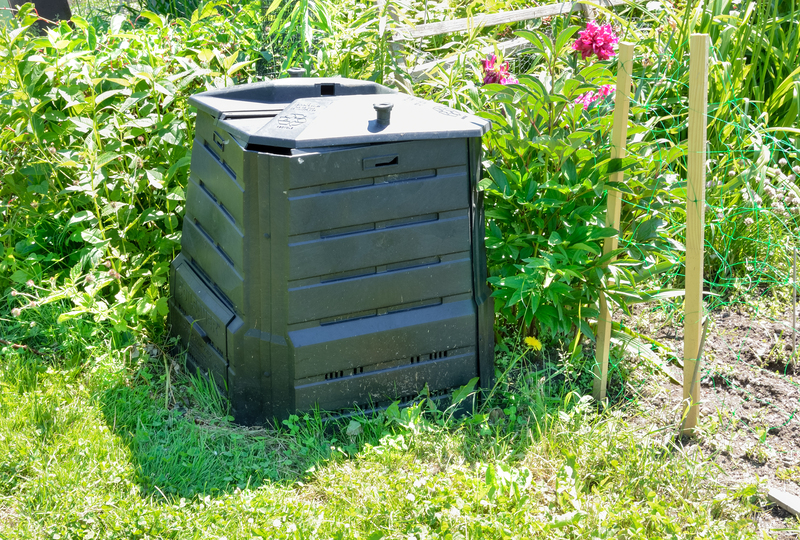Making PPE Waste Disposal Safe for Sanitation Workers and the Public
The unprecedented spread of infectious diseases like COVID-19 has significantly increased the use of personal protective equipment (PPE) around the world. While masks, gloves, and face shields have helped to curb the transmission of viruses, they have also created a new environmental and health challenge: the safe disposal of PPE waste.
PPE waste, if not managed appropriately, can jeopardize the health and safety of both sanitation workers and the public. It can also contribute to environmental pollution, particularly microplastics, and spread infections. This comprehensive guide will discuss how to make PPE waste disposal safe for all, outline best practices, regulations, and innovative strategies, and explore the vital role each stakeholder plays in this process.

Understanding PPE Waste and Its Dangers
What is PPE Waste?
PPE waste refers to disposable items used for personal protection, primarily in healthcare, industrial, and community settings. Common PPE waste items include:
- Masks (surgical masks, N95 respirators)
- Gloves (latex, nitrile, vinyl)
- Face shields and goggles
- Protective gowns and suits
- Head and shoe covers
Why is PPE Waste Hazardous?
PPE waste can carry infectious agents (e.g., viruses, bacteria) and hazardous chemicals. Improper handling exposes sanitation workers to health risks, including infection, allergic reactions, and skin irritation. Inadequately managed PPE also contaminates public spaces, water bodies, and soil, affecting public health and environmental safety.
Statistics show a staggering increase in PPE waste during global health crises. For instance, in 2020 alone, an estimated 1.6 million tons of plastic PPE waste was generated daily worldwide.
The Importance of Proper PPE Waste Disposal
Ensuring safe PPE waste disposal is crucial for:
- Protecting sanitation workers from exposure to infectious or toxic material
- Preventing community transmission of diseases
- Reducing environmental pollution, particularly plastic waste and microplastics
- Maintaining public health and confidence in sanitation systems
Risks to Sanitation Workers
Sanitation workers are among the first to come into contact with discarded PPE. Without adequate protections and protocols, their risk of infection skyrockets. They can also suffer long-term health effects from repeated exposure to chemical contaminants leaching from PPE materials.
Risks to the Public
PPE discarded in public areas increases the danger of indirect exposure, especially when masks and gloves are tossed on streets, parks, or sidewalks. Children, pets, and vulnerable populations are particularly at risk from contaminated PPE.
Strategies for Safe PPE Waste Disposal
Segregation at Source
Proper segregation of PPE waste starts at the point of discard. This minimizes contamination and facilitates safe collection, transport, and disposal. Key practices include:
- Separate bins for PPE waste: Use color-coded or clearly labeled containers for PPE in hospitals, offices, and homes.
- Seal bins securely: Prevent spillage and direct contact by using bags or containers with lids.
- Location: Place bins in high-use areas such as building entrances, restrooms, and near elevators.
Collection and Handling Best Practices
To ensure safe PPE waste management for sanitation workers, the following protocols should be in place:
- Training: Sanitation personnel must receive regular training in handling infectious waste, PPE removal, and decontamination techniques.
- Personal protective equipment: Equip waste collectors with protective gear, including gloves, masks, aprons, and eye protection.
- No hand-sorting: Avoid manually sorting or compacting PPE waste to reduce direct exposure.
- Use of mechanical aids: Where feasible, deploy automated or closed systems (e.g., mechanical loaders, vacuum collectors).
Transportation of PPE Waste
Dedicated and clearly labeled vehicles should be used for transporting PPE waste from collection points to treatment facilities. Vehicles must be regularly disinfected and drivers provided with protective gear and training.
Treatment and Disposal Methods
The final stage of PPE waste disposal typically involves one or more of the following:
- Incineration: High-temperature incineration is a widely used method to destroy pathogens and volume-reduce PPE waste. Environmentally friendly incinerators with air pollution controls are preferred.
- Autoclaving: This method uses high-pressure steam to sterilize infectious PPE before landfill or other final disposal.
- Chemical disinfection: Chemical treatment can neutralize biological contaminants in PPE waste prior to further handling.
- Landfilling (as a last resort): Only non-infectious, sterilized PPE waste should end up in landfills, and proper covering and containment are essential to prevent leaching and environmental contamination.
Innovative Approaches to Safe PPE Waste Disposal
Technology and innovation have driven new solutions for safer and more sustainable PPE waste management.
Recycling and Upcycling PPE Waste
Some companies and organizations have pioneered methods to recycle PPE waste, turning used masks and gloves into materials for park benches, roadways, or construction panels. Upcycling initiatives help offset the environmental burden of single-use plastics and reduce landfill volume.
Biodegradable PPE Innovations
Researchers are developing biodegradable and compostable PPE alternatives. These products break down more quickly and safely in the environment, reducing the risks associated with traditional plastic-based PPE.
Automated PPE Collection and Sterilization
Automated waste bins that seal and sterilize PPE waste on-site can drastically lower the risk of exposure to sanitation workers. Such smart solutions are being trialled in hospitals, airports, and commercial centers.
Government Policies and Guidelines
Many governments and health agencies worldwide have issued guidelines for the safe disposal of PPE waste. These typically include:
- Clear labeling and segregation requirements
- Designated collection and transportation routes for infectious waste
- Mandatory use of incinerators and autoclaves for high-risk PPE waste
- Punitive actions against illegal dumping or unsafe disposal
Compliance with these regulations protects not only sanitation workers but also the wider public from inadvertent exposure to infectious materials.
The Role of Individuals and Communities
How Individuals Can Ensure Safe PPE Waste Disposal
Every individual plays a critical role in making PPE waste disposal safer for everyone:
- Use dedicated PPE waste bins if provided, or double-bag masks and gloves before discarding as household waste.
- Avoid littering PPE in public areas.
- Wash hands with soap and water after disposing of personal PPE.
- Educate family and community members about the hazards of improper PPE waste disposal.
Community Initiatives
Community groups can organize awareness campaigns, install PPE waste collection points, and partner with local authorities for regular pickups and safe disposal.
Protecting Sanitation Workers: A Comprehensive Framework
Provision of Adequate PPE
Ironically, sanitation staff need proper PPE themselves when collecting and disposing of used PPE waste. Making high-quality protective gear available--and ensuring it is regularly changed--greatly reduces their risk of exposure.
Vaccination and Health Monitoring
Vaccination against major communicable diseases, regular health checkups, and access to medical care are vital for the ongoing safety of sanitation personnel.
Mental Health and Occupational Support
Sanitation workers often face stigma, stress, and psychological challenges. Employers must provide counseling, mental health support, and fair compensation as part of a holistic approach to worker well-being.
Educational Campaigns and Public Awareness
Education is a powerful tool in changing public behavior regarding PPE waste disposal. Clear communication, impactful campaigns, and the inclusion of PPE waste management topics in school curricula can foster safer practices long term.
Examples of Successful Campaigns
- "Mask Up, Toss Responsibly"--City-led campaigns promoting the use of mask bins
- Public service announcements on TV, radio, and social media emphasizing the risks of improper disposal
- Educational posters in public transport, schools, and government offices
The Environmental Impact of PPE Waste
PPE litter is now a global environmental challenge. Plastics from disposable masks, gloves, and gowns can persist for hundreds of years, breaking down into microplastics that enter food chains and water bodies.
By making PPE waste disposal safe and sustainable, we protect not only people but also ecosystems for future generations.

Challenges and the Next Steps
Barriers to Safe PPE Waste Disposal
Major challenges remain, including:
- Limited infrastructure for segregation and treatment in developing areas
- Lack of training and PPE for waste workers
- Insufficient public awareness
- Economic constraints on implementing advanced disposal technologies
Recommendations for the Future
- Invest in infrastructure: Build or upgrade treatment facilities and expand collection networks.
- Enhance monitoring: Deploy digital tracking systems for PPE waste flows from source to treatment.
- Foster innovation: Support research into sustainable PPE and waste processing methods.
- Empower communities: Engage citizens in decision-making and incentivize safe disposal behaviors.
Conclusion: Moving Towards Safer PPE Waste Disposal for All
The safe and responsible disposal of PPE waste is a shared responsibility. Governments, organizations, communities, and individuals must work together to protect sanitation workers, safeguard public health, and preserve the environment.
By implementing rigorous segregation, handling, and disposal protocols, investing in worker protection, adopting new technologies, and educating the public, we can minimize the risks associated with PPE waste and build healthier, cleaner cities for tomorrow.
Let us prioritize the safety of both sanitation workers and the public, making PPE waste disposal safe, sustainable, and effective for everyone.